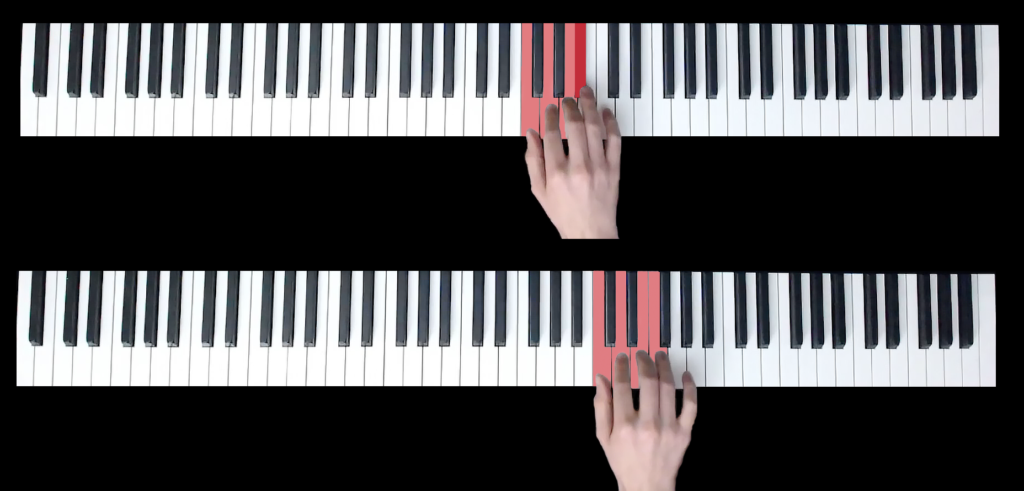When Jazz Pianists Play Fast – A Collection of Runs, Exercises, & Idiomatic Gestures
Find the full article and transcriptions on (Patreon)
—
One of the major premises of these articles is that pianists make improvisatory decisions based on physical relationships, not just harmonic or auditory relationships. This is especially observed when pianists play fast – finger sequences, note clusters, hand positions, and higher levels of abstraction are required to support fast playing and fast decision making.
As a means to demonstrate these physical relationships, this article is dedicated to instances when pianists play their fastest. Below I’ll be assembling a collection of runs from Art Tatum, Thelonious Monk, Oscar Peterson, Chick Corea, and others. This will include proposed fingering and hand positions that optimize economy of motion, and the hand positions/note clusters that form abstracted physical relationships.
With these physical relationships, I’ll also be creating exercises to help pianists expand their own playing. The fingerings and hand positions that come from this analysis represent some of the most idiomatic and ergonomic gestures at the piano. Though they are required to play fast runs, idiomatic gestures give pianists more control, economy, and range of motion at the piano no matter what tempo they’re playing. So, an important part of this process will be to use exercises as a means to isolate and repurpose physical relationships and help support all types of playing.
A note about my transcriptions: My intention is to isolate spatial relationships, not to be rhythmically or metrically accurate. So, my transcriptions primarily use 16th notes and notation that better reflects a pianist’s hand positions. I believe this reflects the intention of the performing pianists anyways. Most of these runs are meant to be played as fast as possible, or with flamboyant expression, not as carriers of rhythm and meter. This is why transcriptions that aim for accuracy often contain absurd rhythmic notation, like 32nd note triplets, quintuplets and sextuplets (From Jed Distler’s transcription of Art Tatum playing Ain’t Misbehavin):

Pianists in these situations aren’t conceiving of complex polyrhythms, they’re more likely wiggling their fingers quickly along clusters of notes, with loose rhythmic and metric relations. With the above as an example, my transcriptions will look more like this:

Analysis will include proposed fingering, clear note heads to represent anchor points (thumb), and stemming to outline hand positions:

The last step will represent the note clusters and higher abstracted structures:

As always, it’s important to remember that music notation is poor at representing the actual physical and visual relationships required to play the piano. Analysis should also include how these note clusters are visualized at the piano. The F major scale for example:

This analysis is extremely time consuming, so I won’t be producing these kinds of images for this article. The point is that these kinds of visual and physical relationships are closer to the act of playing the piano than music notation. If not doing so already, pianists should use these kinds of visual and physical relationships as the basis for learning and memorizing, not just music notation.
–
- Art Tatum – Harmonic & Spatial Interplay (900 words)
- Oscar Peterson – Finger Maps, Directional Relationships & Meter (1500 words)
- Thelonious Monk – Fingering Bias and Mindful Pianists (700 words)
- Chick Corea (coming soon!)
- Exercises – Starting with Fingering Maps (1300 words)
- Exercises – Adding Harmonic Complexity (800 words)
- Exercises – Adding Left Hand & Meter to Simple Fingering Maps (2000 words!)
- Exercises – Adding Left Hand, Meter, and Harmonic Motion (1500 words)
- Exercises – Exploring Directional Variance (1000 words)
- Exercises – Using Physical Transposition (coming soon!)
- Exercises – Left Hand Runs (coming soon!)
